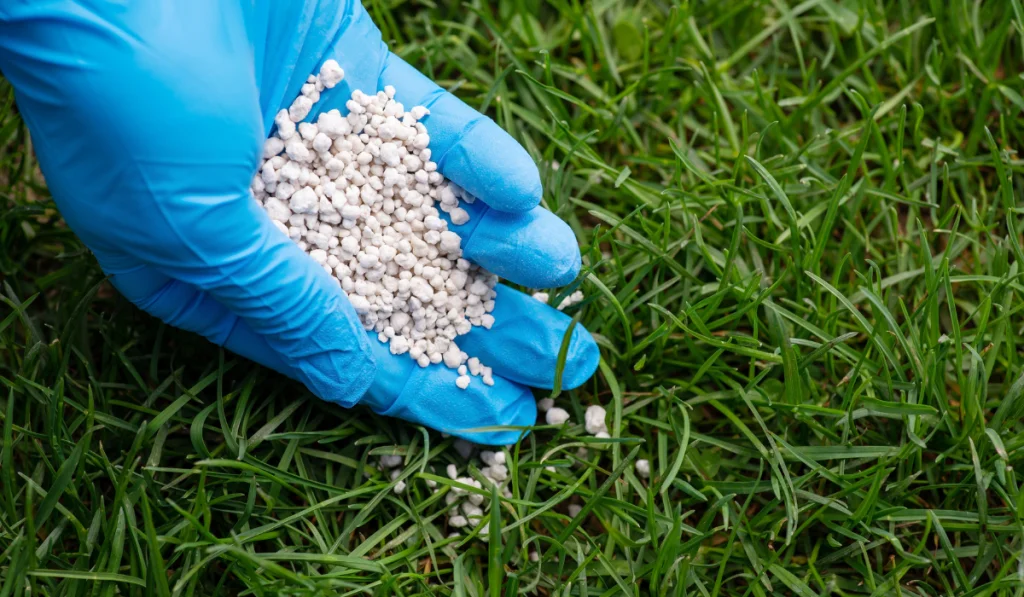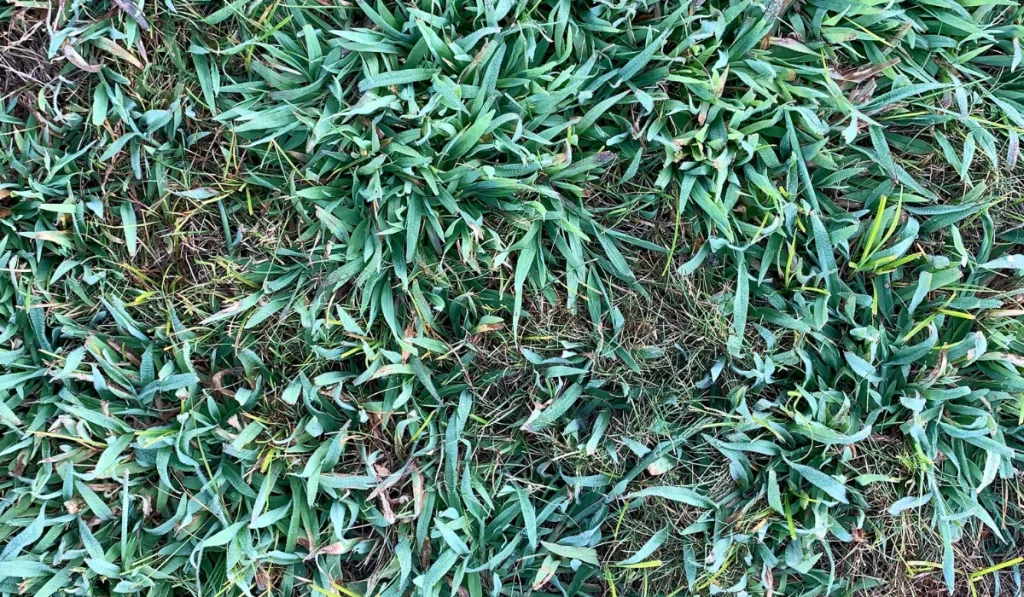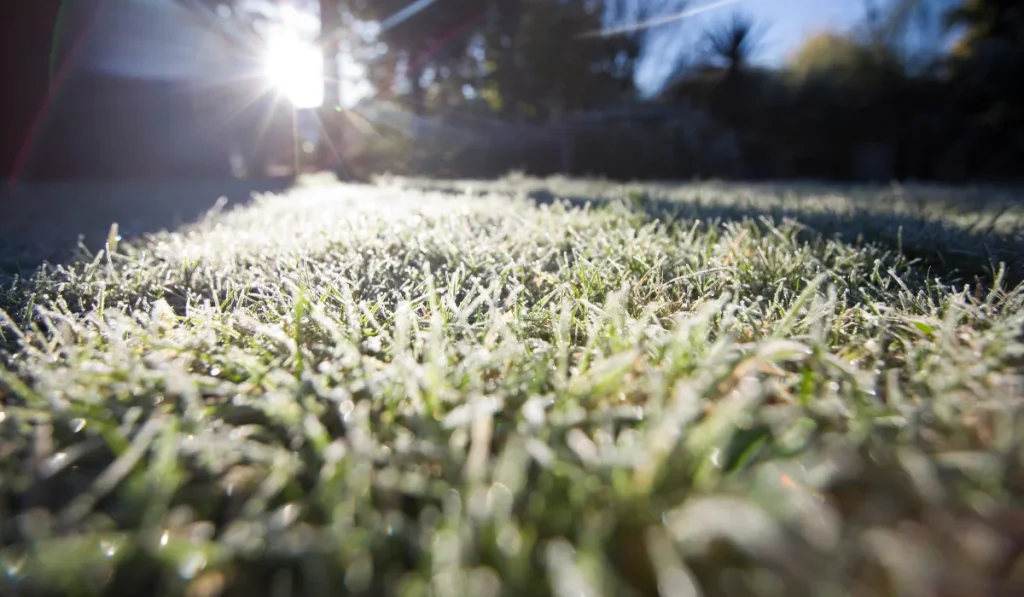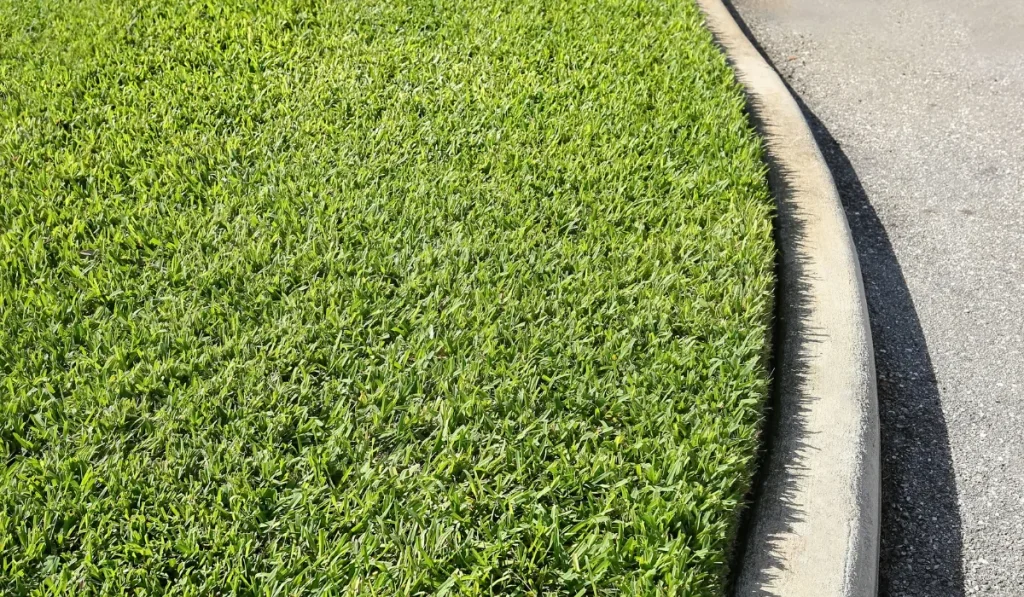Keeping your lawn lush in the summer heat isn’t just about watering—it’s also about using the right fertilizer.
Summer-specific fertilizers packed with nitrogen, phosphorus, and potassium help your grass stay strong and vibrant, despite the heat and drought.
With so many options out there, picking the best one can be tricky. It depends on your grass type, local climate, and lawn condition.
Stay tuned for a rundown of the critical features of the best summer fertilizer that’ll keep your lawn looking great all season.
Key Takeaways
- Proper summer lawn care hinges on using slow-release fertilizers, which nourish the grass steadily to cope with heat and drought.
- The ideal nutrient mix for summer fertilizers, such as 20-0-10, emphasizes high nitrogen and moderate potassium levels to support strong growth and water retention.
- Summer lawn stress signs include wilting, discoloration, and brittle blades, which indicate the need for adjusted watering and fertilization.
- Choosing the correct form of fertilizer, whether liquid or granular, depends on your lawn’s size and specific care needs for effective summer maintenance.
What Does Your Lawn Need in Summer?
Maintaining a healthy, new lawn during the summer requires understanding its unique needs. For instance, adequate nutrition becomes critical to resist the season’s challenges.
Summer stresses lawn grasses with intense heat and the potential for drought. Proper nutrition becomes crucial to help grass cope with these conditions and remain robust.
Here’s why:
- Heat: Intensifies the lawn’s transpiration process, leading to moisture loss and dormancy.
- Drought: Groundwater levels can drop, and grassroots struggle to survive without adequate moisture.
- High Traffic: Summer activities increase foot traffic and can compact the soil, limiting oxygen flow.
Each of these factors can lead to:
- Stunted growth if the grass can’t photosynthesize effectively due to poor nutrition.
- An increase in pests and lawn diseases as stressed lawns become more vulnerable.
To monitor your lawn’s health during the summer, watch for these signs:
| Signs of Stress | Description |
| Wilting | Blades of grass fold or curl to conserve water. |
| Discoloration | Healthy green fades to yellow or brown. |
| Thinning | Sparse patches where grass fails to grow back. |
| Brittle blades | Grass snaps easily due to lack of moisture. |
Best Lawn Fertilizer Suitable for Summer
Summer lawn care often hinges on using the correct type of fertilizer. Slow-release varieties, particularly those slow-release nitrogen fertilizers, are highly recommended.
Slow-Release Fertilizers
Slow-release fertilizers are critical in the summer, as they provide a steady lawn food supply supporting root development and drought resistance.
How They Work
Here’s how slow-release fertilizers work:
- Coating: Slow-release fertilizers are typically coated with a semi-permeable substance that controls the rate at which nutrients are released into the soil.
- Water Absorption: Water from the soil penetrates the coating, dissolving the nutrients inside the granules.
- Nutrient Release: As the nutrients dissolve in water, they are slowly released through the coating into the surrounding soil.
- Continuous Feeding: This gradual release provides a steady supply of nutrients over an extended period, reducing the need for frequent application.
- Temperature and Moisture Influence: Soil temperature and moisture levels influence the rate of nutrient release, aligning nutrient availability with plant growth rates.
Benefits
With slow-release fertilizers, you can experience many advantages. Here’s a quick look at what you can expect:
| Benefits | Description |
| Steady Growth | Encourages uniform lawn growth without the spikes. |
| Less Frequent Application | Reduces the need for repeated fertilizing, saving time. |
| Reduced Burn Risk | Lower chance of nitrogen burn due to the controlled release. |
| Water Conservation | Enhances water retention, leading to less watering. |
| Long-Term Soil Health | Improves soil structure and health over time. |
| Environmentally Friendly | Organic forms reduce runoff pollution and are eco-friendly. |
Important Features of Summer Lawn Fertilizer
Choosing the right fertilizer is crucial for maintaining a green-up lawn during the challenging summer months.
As homeowners, you should focus on products that support vigorous growth and resilience.
Easily Absorbed
Water-soluble fertilizers provide nutrients that the lawn can easily absorb, which is particularly beneficial during the dry summer months.
- Water-soluble nutrients ensure quick uptake by the grassroots.
- Even distribution of nutrients reduces the risk of fertilizer burn.
- Enhanced nutrient absorption rate leads to efficient use, especially in high temperatures when lawns are stressed.
Nutrient Composition
Nitrogen (N), phosphorus (P), and potassium (K) are essential nutrients for your lawn, along with micronutrients like iron, manganese, and zinc.
A commonly recommended ratio is 20-0-10. Here’s why this formulation works well:
| Nutrient Components | Details |
| High Nitrogen (20%) | Nitrogen promotes lush growth. A higher nitrogen content helps keep the lawn dense and vibrant. |
| Low or No Phosphorus (0%) | Established lawns typically don’t require much phosphorus unless they have a specific deficiency. |
| Moderate Potassium (10%) | Potassium, also known as potash, helps the grass develop strong cell walls and retain water. |
Safety Features
Safe use around children and pets is a critical concern. A lawn fertilizer should be effective and safe for use in residential areas.
Here’s what to look for when choosing a fertilizer:
- Check for pet-friendly labels and certifications.
- Look for non-toxic formulations.
- Confirm it’s free of harmful chemicals for peace of mind during DIY lawn care.
Environmental Impact
Eco-friendly fertilizers support a sustainable approach to lawn care without compromising effectiveness.
Here’s a look at different types of fertilizers:
| Types of Fertilizer | Description |
| Organic Fertilizers | Derived from natural sources such as compost, manure, and bone meal. They release nutrients slowly, minimizing runoff and improving soil health over time. |
| Synthetic Slow-Release | Engineered to release nutrients gradually, which reduces the risk of runoff and pollution compared to fast-release synthetic fertilizers. |
| Synthetic Fast-Release | Quickly releases nutrients, leading to nutrient runoff into water bodies, potentially causing eutrophication and harming aquatic life. |
| Hybrid Fertilizers | Combines organic and synthetic components. The environmental impact varies based on the proportions and specific formulations used. |
Other Lawn Considerations for Summer
As temperatures rise, so does the need to adjust lawn care strategies to maintain a green lawn.
Here are some aspects to consider when fertilizing during the summer heat, a demanding time of year.
| Type of Grass | Fertilization Frequency | Summer Care Tips |
| Bermudagrass | Every 4-6 weeks | Keep mowed short; water deeply |
| St. Augustine | Every 6-8 weeks | Requires frequent watering; taller mowing height |
| Zoysia | Every 6-8 weeks | Drought tolerant; moderate mowing height |
However, cool-season grasses like Kentucky bluegrass and tall fescue should be fertilized less frequently during summer to avoid stress.
This period is also ideal for overseeding cool-season grasses, which can help maintain a lush, thick lawn despite the summer heat.
Managing Soil Conditions
Healthy soil is foundational for a vibrant lawn. Use the following checklist to ensure optimal soil conditions:
- pH Soil Test: Adjust soil pH between 6.0 and 7.0 for maximum nutrient uptake.
- Aeration: Promote oxygen and water flow to roots.
- Organic Matter: Integrate compost to enrich the soil.
- Moisture Retention: Mulch or peat moss can help the soil retain moisture.
How to Choose the Right Fertilizer Form
Choosing the right fertilizer is crucial for nurturing your lawn during summer.
Here’s a closer look at the critical features of liquid and granular fertilizers:
| Features | Liquid Fertilizers | Granular Fertilizers |
| Effectiveness | Provides immediate nourishment and quick green-up. | Releases nutrients slowly, providing long-term nourishment. |
| Application | Easily applied and allows for even distribution on all square feet (sq ft). | Applied using a spreader; suitable for large, consistent coverage. |
| Versatility | Can be mixed with other treatments for multitasking. | Typically used solely for fertilization. |
| Ease of Use | Easier for small areas. | Easier to handle and apply, especially on large lawns. |
| Duration | Quick-acting. | Long-lasting. |
| Best Used For | Quick recovery and addressing immediate deficiencies. | Ongoing nutrition and maintaining health over time. |
| Watering Requirement | Requires watering to help absorption. | Also needs watering but has a lesser risk of burn if delayed. |
How to Prevent Fertilizer Burn
Fertilizer burn occurs when too much fertilizer causes damage to grass. To avoid this:
- Only apply fertilizer when the grass is dry.
- Water the lawn thoroughly after applying fertilizer.
- Use a spreader for even distribution.
- Follow the recommended rate on the fertilizer package.
- Choose a time of day to fertilize that is cool, preferably late afternoon or early evening.



